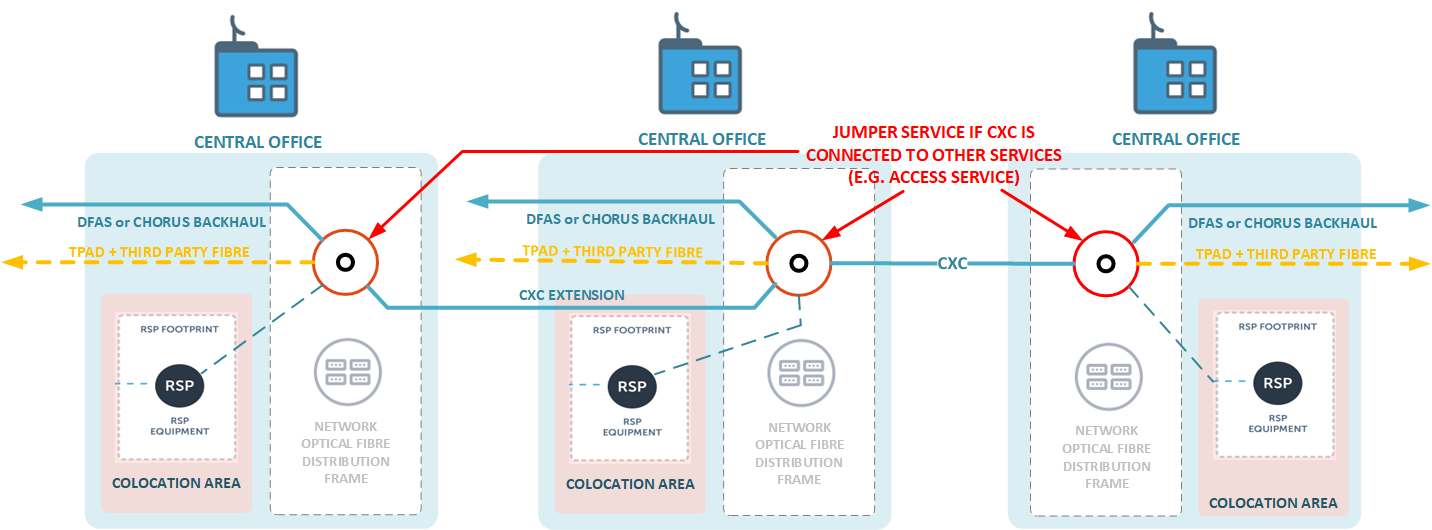Chorus Exchange Connect (CXC) transports traffic between two Central Offices.

The connection may be extended beyond the Central Office using one of the following:
- Chorus Data Centre Connect (CDCC) to a data centre within Chorus POI Central Office area where available; or
- Intra Candidate Area Backhaul Service (ICABS) to another Chorus Central Office where available; or
- Direct Fibre Access Service (DFAS) to site where available; or
- Third party backhaul; or
- Chorus Relay Connect (CRC)
| Single Mode Fibre | External fibre must comply with ITU-T specification G.652D or alternately ITU-T G.657A2. Internal building fibres comply with ITU-T G.657A2, and meet appropriate fire regulations i.e. be Flame-Retardant, Non Corrosive, Low Smoke, Zero Halogen (FRNC/LSZH). |
| Copper Connector Type | RJ45 An 8-position 8-contact (8P8C) Ethernet interface complying with TIA568 wiring standard. |
| Network OFDF | The first Optical Fibre Distribution Frame (OFDF) within a Chorus Central Office, providing a cross-connection facility between external cables entering the site, and all internal tie cables. The Network OFDF can contain a range of connection types as listed below. |
| Optical Connector Type | Connector optical performance complies with the IEC61300-4 (Grade B) for Insertion Loss and IEC61300-6 (Grade 1) for Return Loss. Multi-Push-On (MPO) connectors are Method B wire map and are defined as Ultra Low Loss (ULL), complying with IEC 61754-7 and TIA-604-5-D for intermateability. Connector types (“Available Connectors”) and locations will be:
More information on these connector types is provided in the technical resources on the Service Provider Site under the CXC Service. |
| Optic Path | Laser types and path characteristics expected to be designed to a minimum standard which are contained in the documents for 10G, Compliant with Telcordia GR-253/IEEE 802.3ae/G.959. Generally: MSA compliant pluggables are acceptable 10G variant is either 10G LAN PHY – 10GBase-R or 10G WAN PHY – 10Gbase- 10G LAN PHY is predominant, 10G WAN PHY is an exception The standard optic wave lengths are 1310nm and 1550nm for dual fibre working. Single fibre working pluggables use 1330nm client RX/ 1270nm client TX. More information on SFW pluggables made available under technical resources on Service Provider site under the CXC Service. |
| Tie cables | Tie cables between Network OFDF and SP Footprint can consist of the following connector types: LCAPC at Network OFDF and MPO and / or LCUPC at SP Footprint. |
